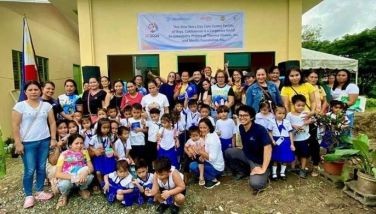The new curriculum
“We cannot equip the youth of the future with the tools of the past,” wrote former DepEd Undersecretary and UNESCO Principal Director Victor Ordoñez in his blog shortly before he died. These words will continue to outlive him, because they express both the problem of and the solution to our educational situation today.
Of course, Marc Prensky expressed it famously earlier in 2001. Prensky said in the first of what is now a series of articles and books, “The single biggest problem facing education today is that our Digital Immigrant instructors, who speak an outdated language (that of the pre-digital age), are struggling to teach a [Digital Native] population that speaks an entirely new language.”
Similarly, the Shift Happens or Did You Know video, done originally as a PowerPoint presentation for a high school faculty meeting in Colorado in 2006 (the last update was done last April), and now one of the most viewed shows on YouTube (20 million viewers so far and counting) put it more dramatically: “For a student starting a four-year technical or college degree, half of what they learn in their first year of study will be outdated by their third year of study.”
Ordoñez, however, put it in operational rather than merely conceptual terms. Because of the rapid growth of available information and inexpensive technology, students today know and can do a lot more than their teachers. Therefore, teachers and teaching must change radically.
Fortunately, as the French say, the more things change, the more they do not change. The tradition in our Department of Education is to change the curriculum every ten years or so. The time period of ten years is based on the educational principle that you cannot change the curriculum while the student is following it. Any new curriculum has to start with children in first grade; you have to wait for them to finish fourth year to see if the entire curriculum really works.
The last curricular change happened in 2001. Next year, the basic education curriculum will be changed. Both first grade and first year curricula are being revised.
What is new in the new curriculum?
Lolita Andrada, head of DepEd’s Bureau of Secondary Education, has outlined the shape of the 2010 secondary level curriculum by tying it to “21st century core skills.”
These skills are: “basic scientific, mathematical, and technological literacies; visual and information literacies; cultural literacy and global awareness; adaptability or ability to manage complexity; curiosity, creativity, and risk taking; higher-order thinking and sound reasoning; teaming, collaboration, and interpersonal skills; personal and social responsibility; interactive communication skills; ability to prioritize, plan, and manage for results; effective use of real-world tools; and ability to create relevant, high-quality products.”
The new curriculum focuses on these skills, now called standards rather than minimum learning competencies. These standards follow the new way of looking at education. We now evaluate education in terms of what the system produces rather than what we put into it. In technical terms, we are now outcomes or output-based rather than input-based.
A simple way to understand the difference between output and input is to look at a literature class. In the past, in order to find out if a literature teacher was any good, we checked if s/he had an advanced degree, what publications s/he had done, what the syllabus looked like, what the teaching method was that s/he employed, and things of that sort. In other words, we focused primarily on the teacher rather than the student.
In the outcomes-based way of looking at education, we now focus on the student. How many of the students, after they finish the course or after they graduate, go to a bookstore or library and read a poem or a novel?
Another way to understand the difference is to look at a medical school. Instead of just asking how many of the faculty have specialized training in medical education, we now look at how many patients their students successfully treated as clerks, interns, residents, or specialists. (To be continued)
“WORDS OF THE DAY” (English/Filipino) for next week’s elementary school classes: June 29 Monday: 1. bed/sabihin, 2. hour/gusto, 3. chief/sabi, 4. kiss/lalaki, 5. self/babae, 6. sex/nasa; June 30 Tuesday: 1. far/para, 2. mine/ngayon, 3. cheap/makita, 4. crack/maging, 5. brick/doon, 6. brake/lahat; July 1 Wednesday: 1. bad/alam, 2. heat/dito, 3. chance/iyo, 4. burn/gawin, 5. brass/kahit, 6. shame/sarili; July 2 Thursday: 1. sad/kaya, 2. pipe/kanila, 3. art/dalawa, 4. flame/lamang, 5. mass/noon, 6. tax/tayo; July 3 Friday: 1. boy/pala, 2. male/iyan, 3. knot/tao, 4. grain/anak, 5. hate/kailangan, 6. crush/mukha. The numbers after the dates indicate grade level. The dates refer to the official calendar for public elementary schools. For definitions of the words in Filipino, consult UP Diksiyonaryong Filipino.
- Latest
























